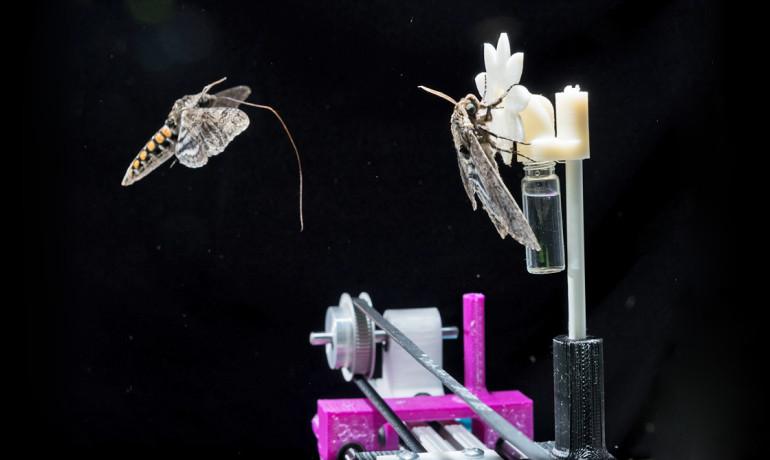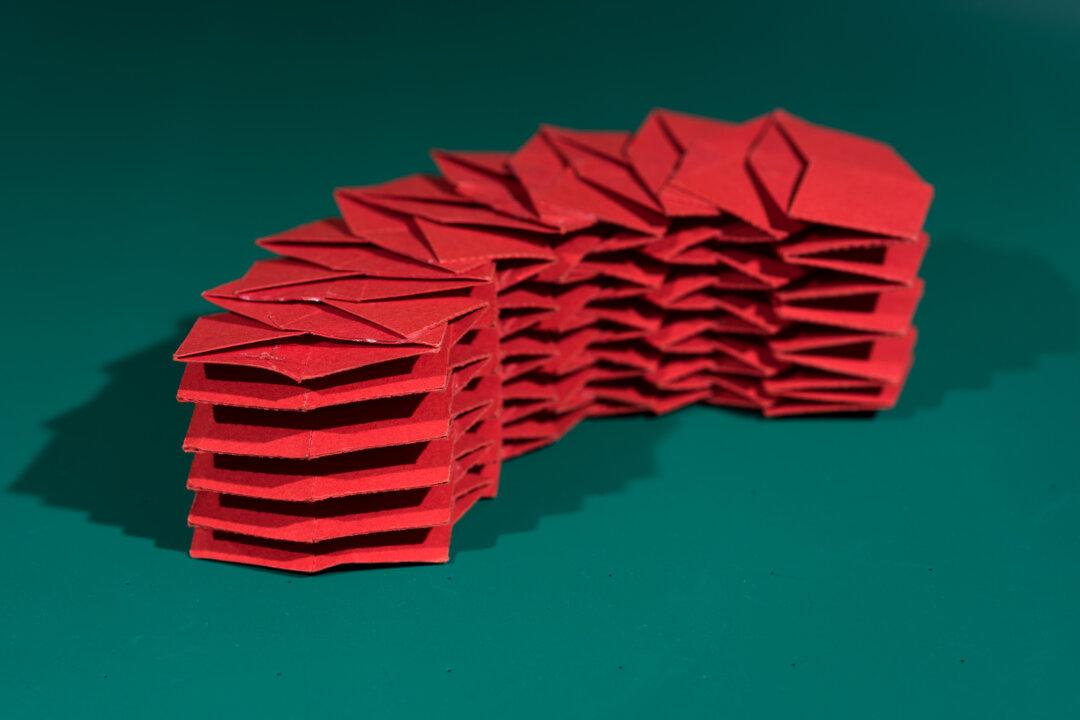It’s difficult enough to see things in the dark, but if you’re a hummingbird-sized hawkmoth you also have to juggle hovering in midair while tracking a flower that’s moving in the wind.
Using high-speed infrared cameras and 3-D-printed robotic flowers, scientists have learned that the insects manage these complex sensing and control challenges by slowing their brains to improve vision under low-light conditions—while continuing to perform demanding tasks.
The findings could help the next generation of small flying robots operate efficiently under a broad range of lighting conditions, researchers said.
“There has been a lot of interest in understanding how animals deal with challenging sensing environments, especially when they are also doing difficult tasks like hovering in midair,” said lead author Simon Sponberg, a former postdoctoral researcher at University of Washington who is now an assistant professor in the School of Physics and School of Applied Physiology at Georgia Institute of Technology.
“This is also a very significant challenge for micro air vehicles.”
Control Theory
The hawkmoth has been studied extensively to investigate the fundamental principles governing the development and function of its neural system, said co-author Tom Daniel, a biology professor and director of the new Air Force Center of Excellence on Nature-Inspired Flight Technologies and Ideas at University of Washington.
Daniel’s research group has experimentally characterized the response of flying hawkmoths using a sensory input comprised of the linear sum of sine waves. The new paper, published in Science, extends application of the “sum of sines” approach, he said.





